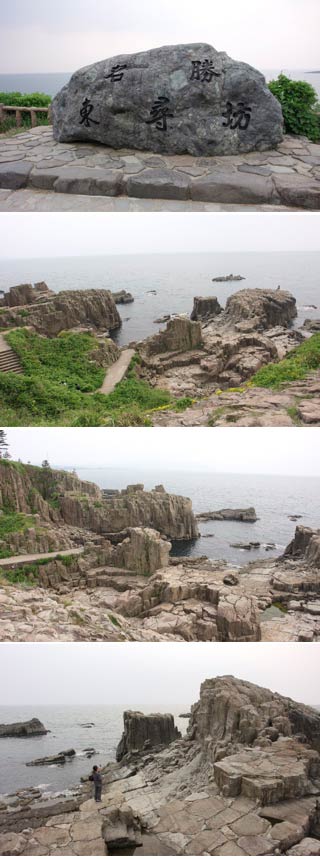The hilly area known as Tojinbo centers on a 80.8 meter high plateau named Jingaoka and was formed about 500,000 years ago. ThePlateau and surrounding cliffs are composed of sedimentary layears of conglomerate, tuff, mudstone, and sandstone, together referred to as the Komegawaki formation. Various types of hard andesite arealso spread throughout the area, in Tojinbo and in the Oshima and Echizen Matsushima Islands.
While the hard andesitic coastlne does not easily erode, the sedimentary layers are soft and prone to erosion. This is why Tojinbo and Oshima and Echizen Matsushima Islands now stand out prominently, forming spectacular castal cliffs.
The Origin of the Name Tojinbo
Ages ago, there lived an extremely powerful and evil monk at the Heisenji Temple in Katsuyama named Tojinbo. One day, the other monks at the temple, who all despised Tojinbo, invited him to accompany them to the Mikuni cast, alleging that they would be going sightseeing. Once there, they got Tojinbo drunk and threw him into the depths of the ocean to die. It is said, however, that Tojinbo's wrath gave rise to a number of mysterious phenomena, lending the area its name.






